Don't wanna be here? Send us removal request.
Text
Hidden Value in Scrap Computers

Every year, thousands of businesses and individuals throw away old, broken, or outdated computers thinking they’ve lost all value. But here’s the truth scrap computers are a goldmine of hidden value, both literally and economically.
Inside every computer lies a complex system of valuable components from precious metals to reusable parts. Disposing of them carelessly not only harms the environment but also means losing out on an opportunity to recover that value. With the right strategy and certified recycling partner, scrap computers can become a source of income, innovation, and sustainability.
What Makes Scrap Computers So Valuable?
Old computers are much more than plastic and wires. They contain a wide range of materials that can be recycled, refurbished, or reused, including:
Precious metals like gold, silver, and palladium in motherboards and processors
Reusable hardware like RAM, hard drives, power supplies, and graphic cards
Rare earth elements used in chips and capacitors
Recyclable metals like aluminum and copper from chassis and wiring
Data storage devices that, when securely wiped, can be reused or resold
These components, when extracted correctly, can generate revenue, support resource conservation, and reduce e-waste volume.
Smart Ways to Unlock the Value in Scrap Computers
1. Professional Dismantling and Component Recovery
Certified recyclers can dismantle scrap computers and recover usable parts and valuable metals using eco-friendly processes — reducing pollution and increasing yield.
2. Refurbishing Functional Parts
Even if a system is broken, parts like the hard drive, SSD, RAM, fans, or power units may still work. These can be tested, cleaned, and reused in other machines, saving businesses on replacements.
3. Safe Data Destruction and Drive Reuse
Hard drives often go to waste due to data privacy concerns. With secure data wiping and destruction services, these drives can be safely reused or sold, adding real value to the scrap.
4. Bulk Selling to Certified E-Waste Companies
Selling scrap computers in bulk to companies like Techazar ensures you get competitive value, environmental compliance, and proper documentation.
5. Recycling for Metal Recovery
A single ton of e-waste can yield more gold than a ton of gold ore. Proper recycling techniques can recover gold, silver, copper, and other metals that would otherwise be lost forever.
Why It Matters for Businesses and the Environment
Reduces carbon footprint and landfill waste
Improves ESG and sustainability reports
Ensures compliance with EPR and e-waste regulations
Contributes to India’s circular economy goals
Maximizes ROI on IT infrastructure
The scrap sitting in your IT storeroom could be quietly costing you — or it could be working for you.
Techazar: Turning Scrap Into Sustainable Value
At Techazar, we specialize in helping businesses recover value from scrap electronics. Our secure, certified processes cover every step — from dismantling and data destruction to parts reuse and metal recovery.
As a leading B2B e-waste recycling company in India, we ensure your scrap computers are processed safely, legally, and profitably. With a Pan India network, CPCB and ISO certifications, and complete EPR compliance, Techazar is your ideal partner for unlocking the hidden potential in e-waste.
Discover the true worth of your old computers — visit www.techazar.in
#ScrapComputers#HiddenValueInEWaste#ComputerRecycling#EwasteSolutions#ElectronicsRecovery#RecycleOldComputers#GreenITSolutions#ITAssetDisposal#Techazar#SustainableRecycling
0 notes
Text
Smart Ways to Reuse Office Electronics

Offices today are rapidly evolving, upgrading to smarter systems, remote tools, and energy-efficient devices. But with every upgrade comes a critical question: What happens to the electronics that are no longer in use? Disposing of old equipment is not the only option. In fact, reusing office electronics is one of the smartest and most sustainable decisions a business can make.
India generates thousands of tons of office e-waste every year, including laptops, desktops, printers, monitors, servers, routers, and more. While some are still functional, many are discarded prematurely, adding to landfills and pollution. Reusing these electronics not only reduces waste but also cuts costs and supports green goals.
Why Reuse Office Electronics?
Reusing electronics is more than just a cost-saving tactic. It brings real value to businesses:
Reduces E-waste Generation
Extends Product Lifecycles
Lowers IT Procurement Costs
Supports Corporate Sustainability Goals
Improves ROI on Tech Investments
Smart and Effective Ways to Reuse Office Electronics
Here are practical strategies that any business can adopt to breathe new life into their old tech:
1. Refurbish and Redeploy Internally
Devices like laptops, monitors, or printers that are in working condition can be refurbished and reassigned to teams with less demanding tech requirements such as interns, admin staff, or warehouse units.
2. Donate to Schools or NGOs
Old but usable electronics can make a huge difference to educational institutions, NGOs, or rural training centers. It’s a great way to give back while reducing waste.
3. Convert Devices for Spare Parts
Non-working devices can be disassembled professionally and useful components like RAM, SSDs, power supplies, and cables can be salvaged and reused in other machines.
4. Use for Training and Testing
Outdated electronics can be used for internal training purposes, IT troubleshooting practice, or software testing, avoiding risk to live systems.
5. Lease or Sell to Refurbishers
Businesses can also sell used electronics to certified refurbishers or partner with B2B e-waste companies like Techazar, who ensure secure data wiping and responsible reuse.
6. Setup Dedicated Backup Systems
Old servers and desktops can be repurposed as backup storage or local servers for non-critical tasks, saving on additional infrastructure costs.
Benefits Beyond Cost Savings
Reusing electronics doesn’t just benefit the bottom line , it also builds brand reputation, ensures data security when handled properly, and supports a sustainable IT lifecycle. It helps meet CPCB compliance, ISO standards, and EPR obligations, which are increasingly important for Indian enterprises.
Partner with Experts Like Techazar
At Techazar, we help businesses unlock the full value of their unused electronics. From refurbishment and secure data destruction to B2B redeployment strategies, we ensure your old tech is reused, resold, or recycled a smart way.
With certified processes, a Pan India service network, and deep expertise in office IT asset recovery, Techazar is your trusted partner for sustainable tech reuse.
For expert solutions on IT asset reuse, visit www.techazar.in
#ReuseOfficeElectronics#SustainableOfficeSolutions#RefurbishToReuse#EwasteReduction#TechReuseIndia#ElectronicsReuse#CircularEconomy#OfficeEwaste#GreenOfficeTech#Techazar
0 notes
Text
Chip Waste Crisis in India
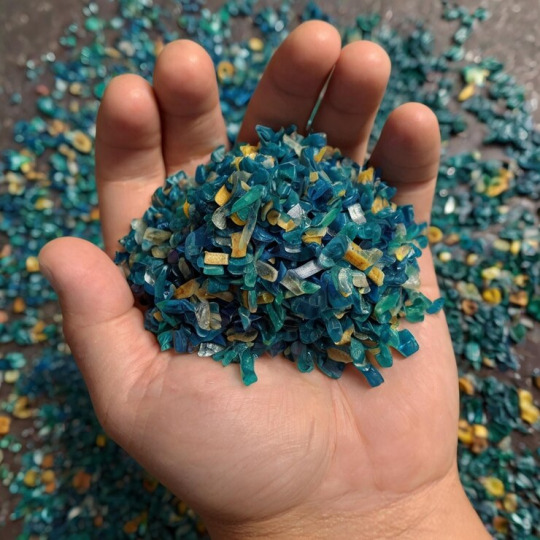
India is surging ahead in the digital age. With record smartphone sales, expanding IT infrastructure, and rising electronics consumption, the country is embracing a tech-first future. But hidden beneath this progress lies a ticking environmental time bomb the chip waste crisis.
Often overlooked and poorly managed, chip waste refers to discarded microchips, semiconductors, and integrated circuits that power modern electronics. These tiny components may be small in size, but they pose a massive threat to our environment, health, and sustainability goals.
The Growing Danger of Chip Waste
Every electronic device from phones and laptops to industrial servers and smart appliances contains semiconductors. When these devices become obsolete, millions of chips end up in landfills or are dismantled unsafely in the informal sector. This leads to:
Leakage of toxic substances like lead, cadmium, and brominated flame retardants
Air and soil pollution from improper burning or acid extraction
Massive loss of valuable rare earth materials
Health risks for workers in unregulated recycling hubs
India already ranks among the top e-waste generating nations, and the rising pile of chip waste is accelerating the crisis.
Why India Is at Risk
Lack of Awareness
While e-waste discussions often focus on visible items like mobiles or monitors, micro-level components like chips are ignored, yet they carry the highest toxic load.
Informal Recycling Practices
Unorganized dismantlers burn or chemically strip chips to retrieve metals, causing irreversible environmental damage and putting thousands of workers at serious health risks.
No Dedicated Chip Recovery Policy
India’s e-waste rules focus on end-of-life electronics, not component-level tracking and disposal. The absence of chip-specific guidelines allows for uncontrolled dumping.
Rapid Tech Growth
The demand for smart devices, electric vehicles, and AI tools means chip usage is exploding, and so is the waste, without the systems to handle it.
The Urgent Need for Action
India cannot afford to wait. Here's what we must do to avoid a deeper crisis:
Promote Certified Recycling
Only a few companies in India offer safe chip extraction and disposal. Partnering with certified recyclers like Techazar ensures chips are handled using environmentally sound methods.
Implement Component-Level EPR
The government must mandate Extended Producer Responsibility (EPR) that includes chip-level accountability from electronics manufacturers and importers.
Build National Infrastructure
India needs dedicated chip dismantling labs, collection points, and recovery hubs across urban and industrial regions.
Drive Corporate Responsibility
IT companies, OEMs, and electronics brands should audit their disposal chains, ensure secure chip destruction, and choose vendors who meet CPCB and ISO standards.
Launch Public Awareness Campaigns
Educating industries and consumers about the risks of chip waste and the importance of safe disposal is key to changing behavior.
Techazar’s Role in Responsible Chip Waste Management
At Techazar, we go beyond traditional e-waste recycling. As a leading B2B electronics recycling partner, we offer secure, compliant, and end-to-end solutions for chip-level dismantling, data destruction, and eco-friendly recovery. Our certified facilities and trained teams ensure even the smallest components are processed safely and sustainably.
From IT asset disposal to advanced recovery services, Techazar helps organizations minimize risk and maximize sustainability.
To know more about chip waste solutions, visit www.techazar.in
#ChipWasteCrisis#EwasteManagement#SemiconductorWaste#RecyclingSolutions#ElectronicWasteIndia#Techazar#SustainableRecycling#GreenElectronics#DigitalWasteCrisis#ElectronicsDisposalIndia
0 notes
Text
Why Data Privacy Matters in E-Waste Disposal

In an era where data is one of the most valuable business assets, the way organizations handle their old electronics can make or break their reputation. While e-waste disposal is often seen through the lens of environmental impact, there’s a far more silent and dangerous threat data privacy breaches.
Disposing of IT assets without ensuring complete data destruction can expose sensitive business and customer information. That’s why secure e-waste management is no longer optional it’s essential.
The Invisible Threat in Discarded Devices
Outdated computers, laptops, servers, hard drives, and mobile phones may appear useless, but they often retain confidential data even after being formatted. Improper disposal methods can leave this data vulnerable to:
Unauthorized recovery
Corporate spying
Identity theft
Data breaches leading to legal liabilities
This overlooked risk can have significant consequences for businesses across all sectors.
Regulatory Responsibilities and Compliance
With rising global awareness of data privacy, laws such as GDPR, ISO 27001, and India’s Digital Personal Data Protection Act have made secure data handling mandatory. Companies failing to comply with these standards during e-waste disposal can face:
Regulatory penalties
Civil lawsuits
Loss of client trust
Operational disruptions
To remain compliant and secure, companies must engage with certified e-waste recyclers who follow internationally recognized data destruction protocols.
Techazar’s Role in Secure E-Waste Disposal
Techazar is a leading name in secure and sustainable e-waste management. As a CPCB-authorized and ISO-certified company, Techazar helps organizations across Pan India responsibly dispose of electronic waste while protecting critical data.
We provide end-to-end services, including:
Data wiping, degaussing, and shredding
Compliance with NIST 800-88 and DoD 5220.22-M standards
On-site and off-site data destruction options
Chain-of-custody documentation
Certificates of Data Destruction for audit and compliance
Our IT Asset Disposition (ITAD) services are designed to meet the highest standards of data security and sustainability.
Environmental Safety with Data Security
At Techazar, we believe that data protection and environmental responsibility go hand in hand. Our secure processes ensure:
No data leakage from retired devices
Reduced electronic waste through proper recycling
Compliance with national and international regulations
Businesses that choose Techazar not only meet compliance requirements but also contribute to a greener, safer digital ecosystem.
Don’t let outdated electronics turn into a data liability. Choose Techazar for certified, secure, and sustainable e-waste disposal.
For more information, visit techazar.in
#DataPrivacy#EWasteDisposal#SecureDataDestruction#ITAssetDisposition#EWasteManagement#Techazar#ElectronicWasteRecycling#CyberSecurity#SustainableRecycling#ISO27001#CPCBCertified#DataSecurity#RecycleElectronics#EWasteSolutions#PanIndiaServices#GreenRecycling#CertifiedEWasteCompany#DigitalDataProtection#SecureITAD#ElectronicsDisposal
0 notes
Text

Responsible E-Waste Management for a Greener Tomorrow
At Techazar E-Cyclers Pvt. Ltd., we believe in building a cleaner, more sustainable future by tackling e-waste the right way.
#EWasteManagement#SustainableElectronics#Techazar#RecycleResponsibly#EwasteIndia#CircularEconomy#GreenTech#ElectronicsRecycling#RefurbishReuseRecycle#GoGreenWithTechazar
0 notes
Text
The Growing Importance of EPR Compliance for Businesses
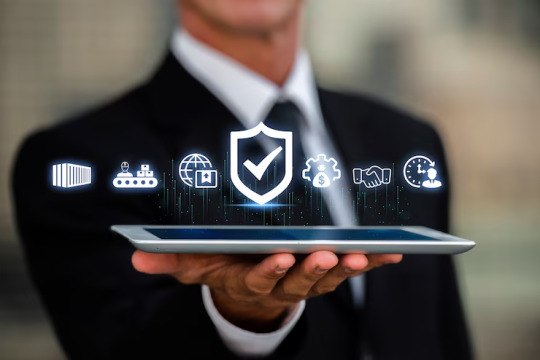
Driving Sustainability, Accountability, and Legal Compliance in E-Waste Management
As environmental regulations tighten and consumer expectations shift toward greener practices, Extended Producer Responsibility (EPR) is becoming a cornerstone of sustainable business operations in India. For companies that manufacture, sell, or import electronic products, EPR compliance is no longer optional it’s essential.
At Techazar, we work closely with organizations to simplify their EPR journey, ensuring they meet regulatory obligations while advancing their environmental, social, and governance (ESG) goals.
1. What is EPR and Why Does It Matter?
Extended Producer Responsibility (EPR) is a government-mandated policy that holds producers accountable for the entire lifecycle of their electronic products including collection, recycling, and environmentally safe disposal once those products reach end-of-life.
This framework ensures that businesses actively participate in reducing electronic waste (e-waste) and encourages the adoption of sustainable production and recycling practices. Learn more about how we support compliance through our EPR for e-waste management services.
2. Regulatory Pressure and CPCB Mandates
The Central Pollution Control Board (CPCB), along with various State Pollution Control Boards (SPCBs), has established strict guidelines under the E-Waste (Management) Rules. Companies are required to register as producers and submit annual returns detailing their e-waste collection, recycling, and disposal efforts.
Non-compliance can result in penalties, license cancellation, and reputational damage. Techazar helps businesses navigate these complex regulations with ease. Visit our dedicated e-waste management page to explore our end-to-end compliance solutions.
3. Enhancing Brand Value Through Responsible Recycling
Consumers and stakeholders today favor brands that take environmental responsibility seriously. Demonstrating EPR compliance not only fulfills legal duties but also boosts your brand image as a forward-thinking, environmentally conscious organization.
Our e-waste recycling services help you meet collection targets while supporting a circular economy. Techazar enables businesses to achieve eco-friendly disposal, reuse, and recycling of electronic goods in full compliance with national regulations.
4. Aligning with ESG and CSR Goals
EPR supports broader Environmental, Social, and Governance (ESG) frameworks and Corporate Social Responsibility (CSR) initiatives. Integrating EPR compliance into your sustainability roadmap demonstrates proactive environmental stewardship, which is becoming increasingly important for investors and stakeholders.
Our tailored e-waste management services help integrate EPR into your overall ESG strategy, ensuring transparency and accountability.
5. Digital Tracking, Documentation, and Transparency
With rising compliance demands, documentation is critical. Businesses must maintain accurate records of the volume of products sold, e-waste collected, and recycled quantities.
Techazar provides comprehensive tracking, documentation, and audit support for your EPR compliance needs, making reporting to regulatory bodies like CPCB and TNPCB seamless and stress-free.
6. Supporting the Circular Economy
EPR encourages the reuse and recycling of materials, reducing the need for raw resource extraction. This transition from a linear “make-use-dispose” model to a circular economy not only conserves resources but also fosters innovation in product design and recycling technologies.
Check out our latest updates and insights on circular economy practices on the Techazar Blog.
Final Thoughts
EPR compliance is no longer just a regulatory requirement—it’s a business imperative. It empowers organizations to manage their e-waste responsibly, align with global sustainability goals, and stay competitive in a market that values ethical and eco-conscious operations.
Need help with your EPR strategy?
Visit Techazar.in to learn how we help businesses across India stay compliant and lead in sustainable e-waste management.
#EPRCompliance#ExtendedProducerResponsibility#EwasteManagement#Techazar#SustainableBusiness#CPCBCertified#EwasteRecycling#ITAssetDisposal#GreenIT#ESGGoals#ProducerResponsibility#CircularEconomy#EPRRegistration#ElectronicWasteIndia#CSRInitiatives
0 notes
Text
How Refurbished Electronics Support Corporate Sustainability

Smart Choices for Greener Business Operations
In a world where businesses are under increasing pressure to meet sustainability goals, adopting refurbished electronics has emerged as a smart, impactful solution. Choosing refurbished over new IT equipment not only reduces costs but also significantly lowers the environmental footprint. It’s a strategic move toward corporate sustainability and one that forward-thinking companies are rapidly embracing.
At Techazar, we help organizations unlock the full value of refurbished technology while ensuring compliance, security, and environmental responsibility.
1. Reducing E-Waste Through Reuse
Every refurbished laptop, desktop, or server that is reused instead of discarded directly reduces electronic waste. E-waste is one of the fastest-growing waste streams globally, and businesses are a major contributor.
By extending the lifecycle of electronics through refurbishment, companies help reduce the burden on landfills and contribute to a circular economy. Learn how e-waste management helps minimize environmental damage while creating value from discarded assets.
2. Cutting Down Carbon Footprint
Manufacturing a new electronic device consumes a significant amount of raw materials and energy. By contrast, refurbished electronics require far fewer resources. This drastically reduces the carbon emissions associated with the production and transportation of new devices.
When businesses prioritize refurbished IT assets, they actively support green procurement practices and lower their scope 3 emissions a key metric in sustainability reporting.
Discover more about Techazar’s e-waste recycling services that play a pivotal role in reducing carbon impact.
3. Enabling Cost-Effective IT Sustainability
One of the biggest advantages of refurbished equipment is cost. For startups, SMEs, and even large enterprises looking to optimize IT budgets, refurbished electronics provide high performance at a fraction of the cost without compromising on quality or reliability.
This makes sustainable IT infrastructure accessible, scalable, and financially viable. Explore our full range of e-waste management services that support businesses in adopting greener technology solutions.
4. Promoting Compliance with EPR and ESG Goals
Choosing refurbished equipment supports compliance with Extended Producer Responsibility (EPR) guidelines, which mandate manufacturers and users to take accountability for the lifecycle of electronic products.
Organizations that invest in refurbishment contribute to a closed-loop system, which supports EPR for e-waste management. This also enhances their Environmental, Social, and Governance (ESG) reporting a growing focus for investors and stakeholders.
Get expert insight into your compliance readiness by visiting our EPR solutions page.
5. Supporting Responsible IT Asset Disposition
The decision to buy refurbished should go hand-in-hand with secure and certified IT asset disposition (ITAD). Instead of disposing of outdated electronics, companies can refurbish, reuse, or donate them through trusted partners like Techazar.
Our e-waste recycling and ITAD services ensure that each asset is securely wiped, tested, refurbished, and repurposed to reduce environmental impact while safeguarding data.
6. Encouraging a Culture of Sustainability
Beyond numbers and compliance, choosing refurbished electronics sends a strong message to employees, partners, and customers. It reflects a company's commitment to sustainability, resource conservation, and ethical business practices.
Want to learn more about industry trends, success stories, and green tech tips?
Visit our Techazar Blog for the latest updates in e-waste recycling, refurbished technology, and corporate sustainability.
Final Thoughts
Refurbished electronics are more than just a budget-friendly choice they’re a powerful tool in achieving corporate sustainability. By integrating them into your IT strategy, your business not only reduces its environmental impact but also sets a responsible example for the industry.
Looking to make a sustainable switch?
Visit Techazar.in to explore how we can support your journey toward greener IT operations.
#RefurbishedElectronics#CorporateSustainability#GreenIT#EwasteSolutions#EwasteRecycling#CircularEconomy#ITAssetDisposition#SustainableBusiness#Techazar#EwasteManagementIndia#EPRCompliance#CarbonFootprintReduction#ReuseToReduce#SustainableProcurement#RefurbishedIT
0 notes
Text
Smart Strategies for Secure IT Asset Disposition

Protecting Data, Ensuring Compliance, and Promoting Sustainability
In a digital-first world, organizations deal with an ever-increasing volume of IT assets servers, computers, hard drives, networking equipment, and more. When these assets reach end-of-life, the way you dispose of them can impact your data security, regulatory compliance, and environmental footprint. This is where smart IT asset disposition (ITAD) becomes critical.
At Techazar, we help businesses across India adopt secure and sustainable IT asset disposition strategies. Here's how your company can do the same.
1. Adopt Industry-Standard Data Destruction
Before any device is decommissioned, ensure all data is completely and irreversibly erased. Use certified data sanitization methods like NIST 800-88 and DoD 5220.22-M to meet international security benchmarks.
Why it's important:
Prevents unauthorized access and data leaks
Supports ISO 27001, GDPR, and other compliance needs
Protects business reputation and client trust
2. Partner with Certified ITAD and E-Waste Experts
Working with a CPCB-authorized, ISO-certified e-waste company ensures responsible handling of your assets. Certified vendors like Techazar provide end-to-end ITAD services, including documentation and secure recycling.
Advantages:
Audit-ready certificate of destruction
Legal compliance with environmental standards
Responsible e-waste recycling and material recovery
3. Maintain Accurate IT Asset Inventory
A complete and regularly updated inventory of your IT equipment helps track the lifecycle of each asset. This ensures that no device is forgotten or disposed of improperly.
Benefits include:
Efficient asset management
Reduced risk of data loss
Simplified audits and reporting
4. Choose Between On-Site and Off-Site Wiping
Secure data wiping can be done at your location (on-site) or at a certified facility (off-site). Choose based on your security policies and logistical needs.
Ideal for:
Enterprises handling sensitive data
Government and regulated industries
Remote or multi-location operations
5. Prioritize Eco-Friendly E-Waste Recycling
ITAD isn’t complete without environmentally responsible recycling. Dispose of electronic waste through processes that reduce landfill contributions and recover valuable resources such as rare earth metals and copper.
Sustainability benefits:
Aligns with ESG goals
Minimizes environmental damage
Promotes circular economy principles
6. Demand a Certificate of Destruction
After disposal, always ask for a Certificate of Destruction (CoD). This document serves as official proof that your devices were securely wiped and disposed of in line with applicable laws.
Why it matters:
Legal protection in case of data audits
Evidence of compliance for stakeholders
Peace of mind for IT and compliance teams
7. Train Employees on ITAD Policies
Your team is your first line of defense. Provide regular training to IT staff and asset managers on the latest ITAD best practices, data security protocols, and internal policies.
Final Thoughts
Effective IT asset disposition is more than an operational necessity; it’s a strategic function that supports data security, regulatory compliance, and sustainability initiatives. By adopting smart ITAD strategies, businesses can safeguard their information, reduce environmental impact, and stay legally compliant.
For complete ITAD services across India, visit Techazar.in
#SecureITDisposal#ITAssetDisposition#EwasteManagement#Techazar#ITADSolutions#EwasteRecycling#CertifiedEwasteCompany#ITDisposalCompany#DataWiping#NISTCompliant#DoDStandard#SustainableEwaste#RecycleITAssets#ElectronicRecycling#CPCBCertified
0 notes
Text

Secure Data Wiping for ISO 27001 Compliance
100% data-free devices with NIST 800-88 & DoD 5220.22-M standards. On-site & off-site wiping | ISO 27001 & GDPR ready | Certificate included.
#SecureWiping#ISO27001#DataDestruction#Techazar#GDPRReady#EWasteSolutions#ITDisposal#NIST80088#GreenIT
0 notes
Text
How Companies Can Reduce E-Waste Through IT Lifecycle Management
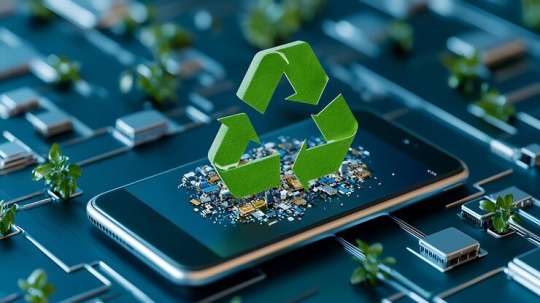
As the pace of digital innovation accelerates, businesses across India are investing heavily in technology. But with every upgrade comes a consequence: the rapid generation of electronic waste. To combat this growing challenge, companies are turning to IT lifecycle management as a strategic way to reduce e-waste and drive sustainable operations.
Implementing a complete lifecycle approach to IT assets from procurement to disposal allows businesses to minimize waste, maximize value, and meet both compliance and sustainability goals.
What Is IT Lifecycle Management?
IT lifecycle management (ITLM) refers to the strategic planning, acquisition, use, maintenance, and disposal of IT assets such as computers, servers, mobile devices, and networking equipment. By managing assets efficiently at every stage, companies can extend their lifespan, reduce costs, and minimize e-waste generation.
Smarter Procurement = Less Waste
E-waste reduction begins before a device is even purchased. Companies can adopt green procurement policies, choosing hardware with longer life cycles, energy-efficient certifications, and upgradeable components.
By working with certified IT recycling companies and e-waste solution providers, businesses can plan for the end-of-life stage right from the start, reducing environmental impact and ensuring proper electronic waste disposal.
Regular Maintenance and Upgrades
Instead of replacing equipment prematurely, companies can extend asset life through regular maintenance, part replacement, and software upgrades. This approach slows down the rate at which hardware becomes obsolete.
Engaging with an IT disposal company that provides asset tracking and refurbishment services helps maintain performance while keeping electronics in use longer a key practice in sustainable e-waste management.
Responsible IT Asset Disposition (ITAD)
Once IT equipment reaches the end of its useful life, secure and certified disposal is critical. This is where IT asset disposition (ITAD) plays a vital role.
Certified partners follow global standards like NIST 800-88 and DoD 5220.22-M for secure data wiping, ensuring all sensitive business data is completely destroyed. They also provide audit trails, certificates of destruction, and e-waste certificates to keep your business compliant with ISO 27001, GDPR, and CPCB regulations.
Enable Asset Reuse and Refurbishment
Not all end-of-life assets need to be scrapped. Devices that are still functional can be refurbished, resold, or donated. This helps recover value, reduce procurement costs, and significantly lower the amount of electronic waste.
Partnering with a trusted technology recycling company helps streamline refurbishment and resale while ensuring proper reporting and documentation.
EPR and Legal Compliance
India's E-Waste Management Rules require businesses to dispose of their e-waste responsibly. Working with a CPCB-authorized e-waste company near me that provides Pan India services ensures full compliance under Extended Producer Responsibility (EPR).
This not only helps avoid penalties but also aligns your business with national sustainability goals.
Final Thoughts
Effective IT lifecycle management isn’t just about asset optimization it’s a long-term strategy for reducing your organization's environmental impact. From eco-friendly procurement to secure e-waste disposal, each stage in the lifecycle plays a role in building a greener future.
By partnering with certified providers who offer data destruction, waste control, urban mining, and computer scrap pickup, businesses can align operations with their ESG goals and reduce their e-waste footprint.
For complete IT lifecycle and e-waste management solutions, visit techazar.in
#ITLifecycleManagement#EWasteSolutions#ITAssetDisposition#SecureDataWiping#ElectronicWasteDisposal#TechnologyRecycling#EwasteCompany#GreenIT#SustainableBusiness#CPCBApproved#ISO27001#ITDisposalCompany#UrbanMining#EPRCompliance#Techazar
0 notes
Text
The Rising Demand for Certified E-Waste Recycling Partners

As businesses and industries across India accelerate digital transformation, the volume of discarded electronics is growing at an unprecedented rate. From outdated laptops to decommissioned servers, the need for certified e-waste recycling partners has never been more crucial.
Companies now recognize that responsible electronic waste disposal isn't just about getting rid of old equipment it's about data security, legal compliance, environmental stewardship, and corporate reputation.
Compliance and Regulatory Pressure
With the enforcement of the E-Waste Management Rules by the Central Pollution Control Board (CPCB), businesses are legally obligated to dispose of their electronic waste through CPCB-authorized recyclers. Failure to comply can result in penalties, damaged credibility, and even legal action.
A certified e-waste company ensures complete traceability, provides an e-waste certificate, and supports your business’s Extended Producer Responsibility (EPR) obligations. More and more organizations are now proactively seeking Pan India e-waste services that are legally compliant and transparent.
Ensuring Data Protection Through Certified Handling
Every IT asset whether it’s a desktop, laptop, hard drive, or printer may hold sensitive business information. Improper disposal without secure data wiping can lead to serious data breaches.
Certified IT disposal companies follow international standards such as NIST 800-88 and DoD 5220.22-M to ensure complete data destruction. These partners also provide audit trails, certificates of destruction, and align with ISO 27001 and GDPR standards a growing necessity in today’s data-sensitive environment.
The Rise of ESG and Sustainable Waste Management
Organizations are increasingly being judged on their Environmental, Social, and Governance (ESG) practices. Proper e-waste management and recycling is now seen as a vital part of sustainability goals.
Choosing a certified technology recycling partner ensures that harmful substances like lead, mercury, and cadmium don’t end up in landfills. Instead, materials like copper, gold, and aluminum are recovered through processes like urban mining, reducing dependency on virgin resources.
These eco-conscious steps help businesses contribute to a circular economy while enhancing their sustainability scores.
Corporate Reputation and Public Perception
Modern consumers, investors, and partners are inclined to support businesses that show a clear commitment to responsible e-waste disposal and ethical recycling.
A trusted electronic recycling center enhances brand image and builds public confidence. Businesses that invest in certified e-waste solutions position themselves as responsible, future-ready enterprises.
Rising Demand = Rising Expectations
The increased demand for e-waste recycling near me isn’t just about availability — it's about quality, credibility, and certified processes. From startups to multinational companies, the preference is shifting toward vendors who offer:
On-site and off-site disposal services
Data destruction certificates
Real-time tracking
Sustainable recycling solutions
Pan India logistics
ISO and CPCB certifications
The expectations are high and rightly so.
Final Thoughts
The rising demand for certified e-waste recycling partners is a sign of positive change. Businesses are no longer viewing e-waste as an afterthought but as a critical component of their IT, compliance, and sustainability strategies.
Partnering with a certified provider ensures legal compliance, secure data disposal, environmental protection, and a stronger brand image.
For certified and end-to-end e-waste solutions across India, visit techazar.in
#CertifiedEWastePartner#EwasteSolutions#SecureDataWiping#Techazar#ITDisposalCompany#SustainableRecycling#ElectronicWasteDisposal#EwasteCertificate#UrbanMining#ESGGoals#TechnologyRecycling#EWasteManagement#ISO27001#CPCBApproved#ElectronicRecyclingNearMe
0 notes
Text
Why Secure Disposal of Office Electronics Matters
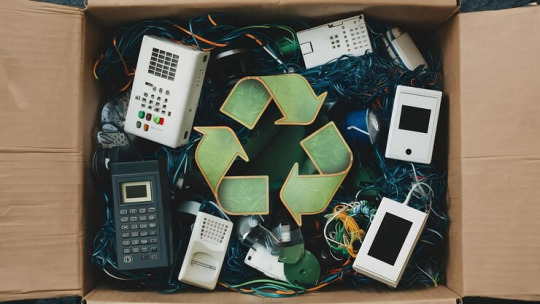
In the digital age, businesses constantly upgrade their hardware to meet modern demands. But what happens to outdated or unused devices? The secure disposal of office electronics is more than just a logistical concern it's a critical aspect of protecting sensitive data, maintaining regulatory compliance, and ensuring environmental responsibility.
Data Security Risks in Discarded Electronics
Office computers, laptops, printers, and servers often store confidential business data. Improper disposal can lead to serious breaches. Even if a device seems non-functional, data can still be recovered without proper erasure.
By following NIST 800-88 or DoD 5220.22-M standards for secure data wiping, businesses can ensure their devices are completely sanitized. Partnering with an ISO 27001-certified IT disposal company ensures that data is securely handled, destroyed, and documented with an e-waste certificate and a full audit trail.
Legal Compliance and E-Waste Regulations
In India, the E-Waste Management Rules make it mandatory for organizations to dispose of electronics through CPCB-authorized channels. Non-compliance not only harms the environment but can result in severe legal penalties.
A certified e-waste company near me offering Pan India services ensures that your electronic waste is processed in compliance with environmental laws, including Extended Producer Responsibility (EPR). You also receive necessary documentation like an e-waste certificate for regulatory audits.
Safeguarding Brand Reputation
A single incident of data leakage or illegal dumping of electronics can severely damage a company’s reputation. Working with a trusted electronic waste company shows that your organization is committed to sustainable e-waste management and data privacy.
Today’s clients, vendors, and stakeholders prefer to do business with companies that embrace responsible recycling and waste management practices.
Environmental Sustainability Through Responsible Disposal
Old electronic devices contain hazardous substances like lead, cadmium, and mercury. Dumping them irresponsibly causes soil and water pollution. However, by working with a technology recycling partner or electronic recycling center, your office contributes to eco-friendly practices and supports the recovery of valuable resources like copper, aluminum, and gold.
Through urban mining and e-waste recycling, these materials are reintroduced into the production cycle, reducing the need for new raw materials and minimizing environmental damage.
Value Recovery from Retired Assets
Through proper IT asset disposition (ITAD), businesses can unlock hidden value in their outdated electronics. Devices that are still functional can be refurbished, resold, or donated, while non-working components can be stripped for parts.
A certified IT recycling company can help recover value while maintaining strict compliance and data security protocols. This is not just environmentally responsible it's also financially smart.
Final Thoughts
From data destruction to waste control, secure disposal of office electronics is essential for any modern business. Choosing a certified partner that provides computer scrap pickup, on-site and off-site wiping, and proper documentation ensures that your organization remains compliant, protected, and eco-conscious.
At the end of the day, secure e-waste solutions aren't just about disposing of devices they’re about building a smarter, greener future.
For more details, visit techazar.in
#SecureDisposal#OfficeEwaste#EwasteRecycling#DataDestruction#ITAssetDisposition#TechnologyRecycling#SustainableEwasteManagement#ElectronicWasteSolutions#EwasteCertificate#ElectronicRecyclingCenter#ITDisposalCompany#UrbanMining#CPCBApproved#ISO27001#EResponsibility#Techazar
0 notes
Text
Urban Mining Unlocking Precious Metals from Electronic Waste

As the world’s consumption of electronics continues to surge, so does the volume of discarded devices. But hidden within this mountain of e-waste lies an unexpected treasure: precious metals like gold, silver, palladium, and platinum. This is where urban mining comes into play—a sustainable and scalable approach to recover valuable materials from obsolete electronics.
What is Urban Mining?
Urban mining is the process of reclaiming rare and valuable metals from electronic waste, rather than extracting them from the earth through traditional mining methods. With the growing availability of used electronics, urban mining is emerging as a more environmentally friendly and economically viable alternative.
One tonne of smartphones, for instance, contains nearly 100 times more gold than a tonne of gold ore. This makes e-waste a rich “urban ore” ready to be tapped into.
Why Urban Mining Matters
Traditional mining is resource-intensive, destructive to ecosystems, and contributes significantly to carbon emissions. On the other hand, urban mining through e-waste recycling:
Reduces the need for new mining
Conserves natural resources
Lowers environmental impact
Promotes a circular economy
In countries like India, where e-waste generation is expected to cross 5 million tonnes annually, urban mining offers a sustainable solution to extract value from waste while reducing ecological harm.
How Precious Metals are Recovered
Urban mining involves advanced e-waste recycling techniques such as:
Mechanical separation of metals from printed circuit boards (PCBs)
Hydrometallurgical and pyrometallurgical processes to extract and purify gold, silver, and other metals
AI-assisted sorting for high-precision recovery and material classification
These processes ensure that maximum material is reclaimed while hazardous waste is safely treated or neutralized.
Techazar’s Role in Urban Mining
At Techazar, we understand the potential of urban mining as both a sustainable e-waste solution and an opportunity for resource recovery. As a CPCB-authorized and ISO-compliant e-waste management company, we offer:
Certified e-waste collection and recycling
IT asset disposition for corporates and institutions
Environmentally responsible computer and server disposal
Safe and efficient recovery of valuable components across India
Our operations are aligned with EPR norms and built to support businesses with eco-friendly e-waste disposal services.
Benefits of Urban Mining with Techazar
Maximize returns on obsolete electronics
Reduce your carbon footprint
Ensure secure and compliant data destruction
Contribute to India's green economy goals
Conclusion
Urban mining is not just about reclaiming metals—it’s about redefining waste as a resource. With the right infrastructure and expertise, e-waste can power the next generation of sustainable industry. Techazar is proud to be at the forefront of this movement, helping organizations across India turn e-waste into opportunity.
To learn more about our e-waste services and recovery solutions, visit www.techazar.in
#UrbanMining#EWasteRecycling#PreciousMetalsRecovery#SustainableTech#Techazar#ElectronicWaste#EwasteSolutions#RecycleElectronics#ITAssetDisposal#CPCBCertified#EcoFriendlyRecycling#UrbanGold#ElectronicRecycling#CircularEconomy#GreenTechnology#SustainableEwasteManagement#UrbanOre#EPRCompliance#RecycleTech#PanIndiaServices
0 notes
Text
The Right to Repair A Game Changer for E-Waste Reduction

In the digital age, electronics have become an essential part of everyday life—but so has the growing mountain of electronic waste (e-waste). One of the most promising global movements pushing back against this crisis is the Right to Repair, a concept that empowers users to repair and reuse their devices instead of discarding them prematurely.
What is the Right to Repair?
The Right to Repair advocates for consumers and independent technicians to have access to the necessary tools, manuals, and parts to repair electronic devices. This includes smartphones, laptops, computers, and other gadgets that often end up in landfills due to minor faults or outdated software.
By enabling repair instead of replacement, the Right to Repair movement aims to:
Extend product lifespans
Reduce e-waste generation
Lower electronic recycling pressure
Encourage manufacturers to adopt sustainable designs
The E-Waste Crisis
Globally, over 50 million tonnes of e-waste are generated every year. In India, this number is increasing rapidly with the rise in electronics usage across both households and businesses. Items that could be repaired and reused often end up in landfills due to limited access to authorized repair options.
This waste includes valuable materials like gold, silver, and copper—resources that could be recovered with efficient e-waste recycling solutions. Instead, improper disposal causes environmental pollution and resource loss.
How the Right to Repair Supports E-Waste Management
At Techazar, we recognize the powerful connection between repair rights and sustainable e-waste management. Here’s how the Right to Repair supports reduction strategies:
Reduces premature disposal: By fixing minor issues, devices stay in use longer and reduce demand for new production.
Promotes reuse over recycling: Reuse consumes fewer resources than recycling, which often involves energy-intensive processes.
Creates a circular economy: Encouraging repair and resale supports a closed-loop system where electronics stay in circulation.
Government Push and Global Trends
Countries like the U.S., France, and the EU are already implementing Right to Repair laws. India is also seeing rising advocacy in this direction, with discussions around EPR (Extended Producer Responsibility) evolving to include support for longer product lifecycles.
This shift is essential for improving compliance with ISO standards and CPCB e-waste handling guidelines, both of which Techazar adheres to across our Pan India operations.
Techazar’s Approach
As a leading e-waste recycling company, Techazar believes in empowering businesses and institutions with access to responsible IT asset disposition, refurbishment, and certified e-waste recycling. We actively promote repair-first strategies where applicable and offer reliable collection and recycling services for devices beyond repair.
Whether you're looking for electronic waste solutions, computer scrap disposal, or business e-waste pickup, our team ensures your IT waste is handled in the most eco-conscious and regulatory-compliant way.
Conclusion
The Right to Repair is more than just a consumer right—it’s a crucial tool in the fight against electronic waste. By promoting a repair-first mindset, we can dramatically reduce the volume of discarded electronics, conserve valuable resources, and build a more sustainable digital future.
For more information on sustainable e-waste services, visit www.techazar.in
#RightToRepair#EWasteReduction#SustainableElectronics#Techazar#ElectronicWaste#GreenTechnology#EwasteSolutions#ElectronicRecycling#CircularEconomy#RepairDontReplace#EwasteIndia#TechSustainability#EcoFriendlyTech#CPCBCertified#ISORecycling#ITAssetDisposal#RepairRevolution#ReuseRecycle#ElectronicsRepair#PanIndiaServices
0 notes
Text
How AI is Revolutionizing E-Waste Sorting and Recycling
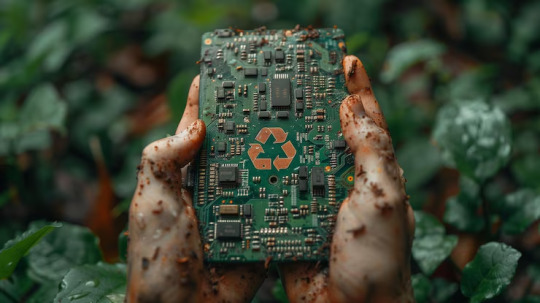
In the age of rapid technological advancement, managing electronic waste (e-waste) has become a critical environmental priority. With increasing volumes of discarded gadgets, from smartphones to servers, traditional recycling methods are proving inefficient and unsustainable. Enter Artificial Intelligence (AI) the game-changer in e-waste management.
The Growing Challenge of E-Waste
India alone generates over 3 million tonnes of e-waste annually, making it one of the top e-waste producing nations. Items like old laptops, mobile phones, batteries, computer parts, and servers are disposed of every day. The improper handling of this waste not only contributes to environmental degradation but also poses serious health risks due to the presence of hazardous materials like lead, mercury, and cadmium.
AI-Powered Sorting Systems
One of the biggest challenges in e-waste recycling is the efficient identification and segregation of valuable components from hazardous waste. AI is now transforming this process with intelligent sorting systems equipped with machine vision and deep learning algorithms.
These systems can:
Identify materials: Using cameras and sensors, AI detects plastics, metals, and circuit boards with high precision.
Enhance speed and accuracy: Unlike manual sorting, AI-driven systems operate 24/7 and reduce human error.
Automate decision-making: Intelligent algorithms assess item condition, resale value, and recyclability, optimizing the recovery process.
Robotics in E-Waste Dismantling
AI-powered robots are being used to safely dismantle electronics without damaging recoverable parts. These robotic arms, guided by real-time image recognition, can unscrew, separate, and sort components faster and safer than manual labor. This is particularly beneficial when handling complex devices like laptops or smartphones with intricate assemblies.
Predictive Maintenance in Recycling Plants
AI also supports predictive maintenance in e-waste recycling plants by analyzing machine performance data to forecast breakdowns. This helps in reducing downtime and maintaining continuous operations, increasing overall plant efficiency.
Data-Driven E-Waste Management
With the integration of AI and big data analytics, companies like Techazar are revolutionizing e-waste tracking and logistics. From collection and transportation to dismantling and disposal, every step is now optimized through data insights. AI enables real-time tracking of electronic waste streams and provides transparency in compliance with EPR (Extended Producer Responsibility) norms.
Advantages of AI in E-Waste Solutions
Improved resource recovery
Reduced environmental impact
Enhanced compliance with ISO and CPCB standards
Cost-effective and scalable recycling
Conclusion
The future of sustainable e-waste recycling lies in the seamless fusion of technology and environmental responsibility. At Techazar, we’re committed to leading this revolution with AI-driven e-waste solutions that ensure smarter, safer, and greener practices. Whether you're a business looking for responsible IT asset disposition or need certified e-waste recycling near you, Techazar offers Pan India services with end-to-end support.
For more details, visit www.techazar.in
#AIRecycling#EWasteManagement#SustainableTechnology#ElectronicWaste#Techazar#AIInRecycling#GreenTech#WasteManagementSolutions#ElectronicRecycling#SmartRecycling#EcoFriendlyTech#EwasteSolutions#RecyclingInnovation#ITAssetDisposal#RecycleElectronics#PanIndiaServices#EWasteRevolution#AIForSustainability#TechRecycling#EwasteNearMe#DigitalWasteManagement#ISORecycling#CPCBCertified#EPRCompliance#AIWasteSorting
0 notes
Text
What is a Battery Passport and Why It Matters for E-Waste Management.

As the world shifts to electric mobility and renewable energy, the number of used batteries especially lithium-ion is rapidly increasing. Managing their lifecycle safely and sustainably is critical. This is where the concept of a Battery Passport becomes a game-changer in modern e-waste management.
What is a Battery Passport?
A Battery Passport is a digital record that tracks essential information about a battery including its origin, composition, performance, repairs, recycling history, and environmental footprint. Think of it as a digital identity card that stays with the battery from manufacture to disposal.
Why It’s Crucial for Sustainable Recycling
With battery recycling becoming more complex and urgent, having detailed data on every battery enables recyclers to:
Identify hazardous materials safely
Optimize dismantling and recovery
Ensure compliance with environmental regulations
Improve material traceability across the supply chain
It also supports circular economy goals by making reuse and second-life applications easier and safer.
Battery Passports and the Future of E-Waste Solutions
As part of global green policy shifts especially in the EU and expected soon in India battery passports will soon be mandatory for EVs and industrial storage units. For e-waste companies and technology recycling providers, this means better efficiency, safety, and data-driven decision-making in the electronic waste recycling process.
Enabling Smarter Battery Management in India
With India seeing a boom in electric vehicles and energy storage, adopting battery passports can significantly improve sustainable e-waste management and reduce landfill risks. From battery recyclers to electronic waste collection centers, this innovation ensures that no battery goes untracked or unmanaged.
For more details, visit www.techazar.in
#BatteryPassport#SustainableBatteries#BatteryRecycling#EWasteManagement#CircularEconomy#GreenTech#BatteryLifecycle#EwasteSolutions#RecyclingInnovation#TechSustainability#ElectronicWasteRecycling#BatteryDisposal#EcoFriendlyTech#SustainableEWaste#Techazar
0 notes
Text
Eco Labels on Electronics and the Future of Responsible Recycling
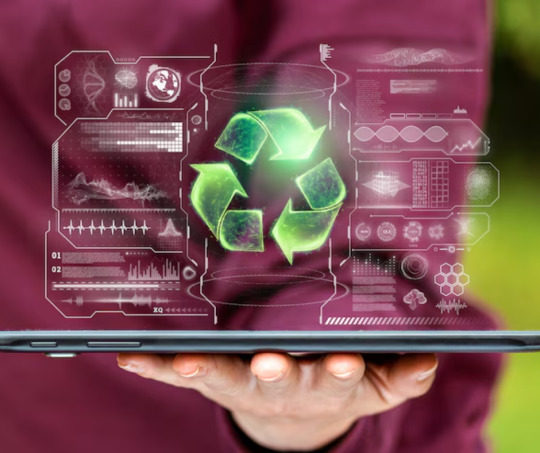
As consumers grow more environmentally conscious, eco labels on electronics are becoming powerful tools for promoting sustainability and responsible e-waste management. These labels help buyers make informed choices while pushing manufacturers toward greener production and end-of-life recycling practices.
What Are Eco Labels and Why Do They Matter?
Eco labels are certifications or marks on electronic products that indicate they meet certain environmental standards from energy efficiency to recyclability. Examples include ENERGY STAR, EPEAT, and RoHS compliance. These labels signal that a product is less harmful to the environment throughout its life cycle, including during e-waste disposal.
Empowering Consumers and Enforcing Responsibility
Eco labels not only guide eco-conscious buyers, but also encourage producers to innovate with sustainable materials, minimal toxins, and easier recyclability. In countries like India, where e-waste recycling is a growing concern, these labels support the shift toward responsible electronic waste solutions.
The Role of Eco Labels in Future Recycling
As regulatory frameworks tighten and awareness grows, eco labels are expected to integrate with digital tracking systems, allowing recyclers to scan devices and access information about their components. This will improve sorting, dismantling, and safe electronic disposal, reducing environmental damage and increasing recovery of valuable materials.
A Step Toward a Circular Tech Economy
Eco labeling is more than a trend it's a step toward a circular economy where electronics are designed with reuse, recovery, and recycling in mind. With support from e-waste companies, recyclers, and policymakers, eco labels can play a vital role in reshaping how India manages its mounting tech waste.
For more details, visit www.techazar.in
#EcoLabels#SustainableElectronics#ResponsibleRecycling#EWasteSolutions#GreenTech#RecycleElectronics#SustainableEWaste#ElectronicWasteManagement#GoGreenIndia#EwasteRecycling#TechSustainability#EcoFriendlyTech#CircularEconomy#ElectronicDisposal#Techazar
0 notes